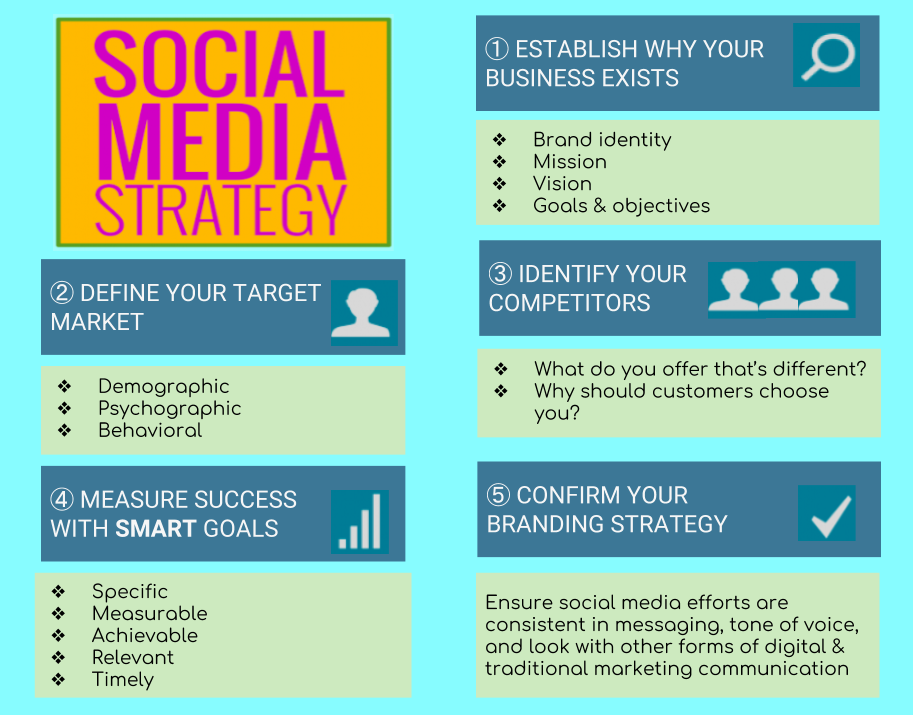Using Getty Images can enhance your social media campaigns by providing high-quality visuals that resonate with your audience. However, it’s essential to understand how to effectively incorporate these images to maximize engagement and brand representation. Below are key insights and strategies.
Understanding Getty Images and Their Benefits

Getty Images is a leading provider of stock photos, videos, and music, making it a valuable resource for brands looking to enhance their visual storytelling. Here are some key benefits:
- High-Quality Content: Getty Images offers professionally curated and high-resolution images that can elevate the overall look and feel of your campaign.
- Diverse Selection: The platform hosts a vast library of images across various categories, catering to different themes, industries, and audiences.
- Licensing Options: Getty Images provides flexible licensing agreements, allowing brands to use images legally and avoid copyright issues.
- Visual Storytelling: Powerful visuals can enhance your narratives, making your posts more engaging and memorable for your audience.
Choosing the Right Images for Your Brand

Selecting the right images is crucial in conveying your brand’s message effectively. Consider the following factors:
- Relevance: Ensure the images align with your brand’s message, values, and the overall theme of your campaign.
- Audience Appeal: Choose images that resonate with your target audience’s interests, cultures, and preferences to foster connection.
- Brand Consistency: Maintain a cohesive style across your visuals by sticking to a color palette and image style that reflects your brand identity.
- Emotional Impact: Select images that evoke emotions and encourage engagement, whether through humor, inspiration, or relatability.
Licensing and Copyright Considerations
When using images from Getty Images or any other stock photography site, it’s essential to understand the licensing and copyright implications involved. Here’s what you need to know:
- Types of Licenses: Getty Images offers several types of licenses, including rights-managed and royalty-free licenses. Rights-managed images are priced based on usage specifics, while royalty-free licenses allow more flexible usage after a one-time fee.
- Stay Informed: Each image comes with its own licensing agreements, detailing how you can use the image and any restrictions. It’s crucial to read these carefully before downloading or integrating images into your campaign.
- Attribution: Some licenses may require you to give credit to the photographer or source. It’s best practice to provide proper attribution where necessary, as it not only respects the creator’s rights but also adds credibility to your work.
- Permitted Use: Make sure the content you choose is suitable for your specific needs. For instance, if you’re promoting products, ensure the images can be used for commercial purposes.
By keeping licensing considerations in mind, you can avoid legal issues and make informed choices in your social media campaigns. Always keep a record of the licenses you purchase and their specifics in case you need to reference them later.
How to Optimize Images for Social Media
Even the most stunning images need a little tweaking to shine on social media. Here are some top tips for optimizing your images to ensure they capture attention and engage your audience effectively:
- Choose the Right Dimensions: Different platforms have varying optimal sizes for images. For example:
| Platform | Recommended Dimensions |
|---|---|
| 1200 x 630 pixels | |
| 1080 x 1080 pixels (for square posts) | |
| 1200 x 675 pixels |
- Compress Your Images: Large files can slow down loading times. Use tools like TinyPNG or ImageOptim to reduce file sizes without sacrificing quality.
- Add Text Overlays: If suitable, adding engaging text overlays can make your images more informative and appealing, especially on platforms like Instagram Stories.
- Utilize Alt Text: Descriptive alt text enhances accessibility, improves SEO, and gives context to your images. Don’t skip this step!
Optimizing your images not only enhances their appeal but can also significantly boost your campaign’s performance. So don’t overlook these vital steps—your audience will thank you!
Creating Engaging Visual Content with Getty Images
When it comes to social media, visuals are key. They capture attention, convey messages quickly, and boost engagement. Using Getty Images, you have access to a vast library of high-quality photographs, illustrations, and videos that can elevate your content. Here are some tips to ensure you’re creating engaging visual content:
- Choose High-Quality Images: Always select visuals that are clear, well-composed, and relevant to your message. High-resolution images look more professional and are more likely to garner attention.
- Consider Your Audience: Tailor your selections based on the preferences and interests of your target demographic. What resonates with one group may not with another, so do your research!
- Create Visual Consistency: Use a cohesive style across your graphics. Whether it’s through color palettes, filters, or types of images, consistency builds brand recognition.
- Tell a Story: Use images that evoke emotions or tell a story. People connect with narratives, so choose visuals that reflect your brand story or campaign message.
- Incorporate Text Overlays: Sometimes a powerful quote or a call to action can enhance the message of an image. Make sure the text is readable and complements the visual without overwhelming it.
By thoughtfully selecting and using Getty Images, you can create visual content that not only captures attention but also resonates with your audience, leading to higher engagement rates.
Integrating Getty Images into Your Social Media Strategy
Integrating Getty Images into your social media strategy can significantly enhance your campaigns, making them more appealing and shareable. Here’s how to effectively incorporate these visuals into your overall social media strategy:
- Develop a Visual Strategy: Outline how images will fit into your overall content calendar. Plan which types of imagery will accompany various types of posts, ensuring a balanced mixture of content.
- Optimize for Each Platform: Different platforms have different requirements and best practices. For instance, prioritize landscape images for Facebook and Instagram, while concise, vertical images may perform better on platforms like Pinterest.
- Use Relevant Hashtags: When using Getty Images in your posts, pair them with relevant hashtags to broaden your reach. This can help your posts get discovered by a larger audience.
- Analyze Engagement: Monitor how different images perform across your social media accounts. Use analytics to understand which types of visuals generate the most engagement and adjust your strategy accordingly.
- Stay Updated with Trends: Keep an eye on current trends in visuals and social media. Sometimes a trending topic can provide an opportunity to use Getty Images that align with what’s popular at the moment.
By integrating Getty Images thoughtfully into your social media strategy, you can significantly boost your brand’s visual identity and engagement levels. Successful campaigns balance visual appeal with strategic planning to create a memorable online presence.
Analyzing the Impact of Visuals on Engagement
When it comes to social media campaigns, visuals are often the first thing that captures your audience’s attention. Understanding how visuals affect engagement is crucial for optimizing your posts. Analyzing the impact of images can help you fine-tune your strategy and increase your reach.
First, consider using analytics tools to track how different types of images perform. Monitor metrics such as:
- Likes: Which images receive the most reactions?
- Shares: Are there images that are shared more frequently?
- Comments: Do certain visuals spark conversation?
- Click-through rates: How many users click links associated with specific images?
Additionally, try conducting A/B testing with your visuals. For example, post two versions of the same content with different images and see which one resonates more with your audience. Pay attention to factors like color, composition, and subject matter. You might find that bright, vibrant colors garner more engagement than muted tones.
Finally, keep an eye on industry trends and popular visual styles. Platforms like Instagram often shift in aesthetic preferences, so staying current is essential. Tools like Google Trends or the built-in analytics of social media platforms can provide insights into what’s working and what’s not. By analyzing these components, you’ll be well-equipped to make data-driven decisions, ultimately enhancing your audience’s engagement with your campaigns.
Best Practices for Image Attribution
Using images from Getty or any stock photo service often requires proper attribution to respect copyright and licensing agreements. Here are some best practices for image attribution that can safeguard your brand and enhance your credibility:
- Understand Licensing: Before using an image, make sure you understand the licensing terms associated with it. Getty Images typically provides various licenses, and each one has specific guidelines on how to use their images.
- Credit the Photographer: If the license requires it, always credit the photographer. This could be as simple as including their name and a link to their portfolio, if available.
- Include an Image Caption: Adding a descriptive caption that includes attribution not only gives credit but also provides context to your audience, making your content more engaging.
- Place Attribution Near the Image: Ensure attribution is easily visible. This can be below the image or in a designated credits section of your post.
In addition to these practices, remember that transparency fosters trust with your audience. Leveraging high-quality visuals while honoring their creators will not only bolster your brand image but also contribute positively to the broader creative community. Always take a moment to double-check your attributions to ensure compliance and respect for the artists whose work enhances your content.
Case Studies of Successful Campaigns Using Getty Images
When it comes to social media campaigns, visuals can make or break your message. Getty Images offers a treasure trove of high-quality visuals that can elevate your content and engage your audience. Here are a few case studies of brands that successfully utilized Getty Images in their campaigns:
1. Nike’s Inspirational Posts
Nike leveraged powerful imagery from Getty Images to showcase athletes in action for their “Just Do It” campaign. By using striking visuals of diverse athletes, they not only celebrated inclusivity but also inspired their audience. The impact? Increased engagement rates and a significant boost in followers across platforms.
2. National Geographic’s Storytelling
National Geographic often uses breathtaking Getty Images to tell stories about nature and wildlife. In a recent campaign aimed at raising awareness about climate change, they combined stunning visuals with compelling narratives, leading to a viral response and heightened engagement with their mission.
3. Coca-Cola’s Seasonal Campaigns
Coca-Cola successfully pulls on the emotional strings of its audience during the holidays by utilizing nostalgic imagery from Getty. Their Christmas campaigns feature heartwarming photos that evoke a sense of tradition and joy. The result? Record-high shares during the holiday season.
4. Airbnb’s Visual Branding
Airbnb incorporates stunning visuals from Getty Images to showcase various travel destinations. By highlighting local experiences through beautiful imagery, they attract users to explore and book their next adventure. This strategy not only boosts their bookings but also enhances user engagement.
These case studies illustrate how effective the right imagery can be in social media campaigns. By using Getty Images thoughtfully, brands can connect deeply with their audience, telling stories that resonate and inspire.
Conclusion and Final Tips for Success
Using Getty Images in your social media campaigns can significantly enhance the visual appeal and overall effectiveness of your content. Here are some final tips to ensure you get the most out of your imagery:
- Know Your Audience: Tailor your image selection to resonate with the specific demographics of your audience. Understand their preferences and cultural nuances.
- Maintain Consistency: Choose images that align with your brand’s voice and aesthetic. Consistency helps build recognition and trust.
- Use Captions Effectively: Pair your images with thoughtful captions that enhance the message and encourage interaction.
- Test Different Formats: Don’t be afraid to experiment with image formats—carousel posts, stories, and reels can all enhance user engagement.
- Stay Updated: Trends in visuals change rapidly. Keep an eye on current design trends and adjust your image strategy accordingly.
In conclusion, the right visuals can be a game-changer for your social media campaigns. By thoughtfully selecting Getty Images and applying these tips, you can create impactful content that resonates, engages, and converts. Happy campaigning!


